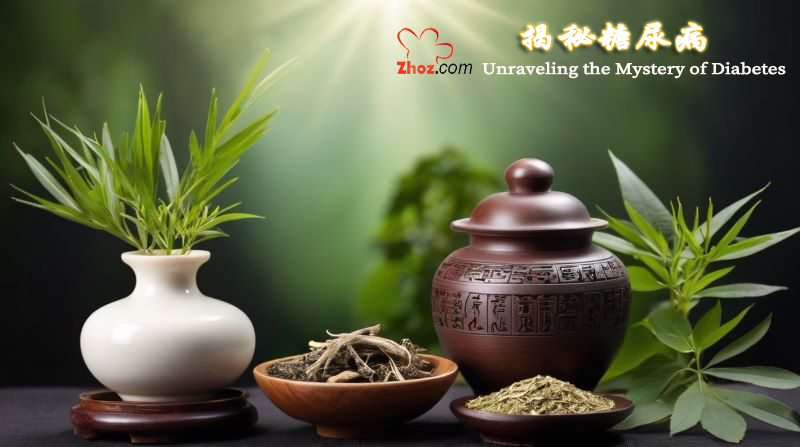揭秘糖尿病 video
Diabetes is exhibiting a rising trend globally. According to data from The Lancet, the number of diabetes patients worldwide has reached 529 million and is projected to increase to 1.3 billion by 2050. Currently, the main classes of medications for diabetes treatment are:
- Reducing sugar absorption
For instance, Acarbose works by forming a barrier in the intestines to block sugar absorption.
- Promoting insulin secretion
Medications like insulin and Metformin accelerate the breakdown of sugar.
While these medications can lower blood sugar levels, they do not cure diabetes. The root cause of diabetes lies in insufficient insulin secretion or impaired function, leading to ineffective sugar breakdown in the body. Thus, further research is needed to understand the causes of pancreatic damage and how to repair it.
The concept of “energy” in Western medicine parallels the idea of “Qi” in Traditional Chinese Medicine (TCM); both are intangible yet fundamentally exist. Energy is essential for life, and a deficiency can lead to illness. Diabetic patients struggle to convert sugar into energy.
In TCM, the spleen and stomach are crucial for transforming food into Qi. A weak spleen leads to poor food transformation, resulting in Qi deficiency and insufficient energy supply to the organs. Qi is akin to “food” for the organs; when it is lacking, the organs can suffer, potentially leading to diabetes.
In TCM, diabetes is referred to as “Xiao Ke” (消渴症) and was known as “San Xiao” (三消症) before the Ming Dynasty, indicating that the condition weakens the three burners (San Jiao), which encompass the upper body and all internal organs. The overall weakness in diabetic patients stems from this.
Since the spleen governs transformation, a deficiency can hinder the conversion of food into blood and energy, often leading to complications like cardiovascular diseases. Spleen deficiency can also cause liver Qi stagnation, resulting in blood vessel blockages. Vision issues, such as cataracts, relate to liver deficiency, as the eyes are considered the “orifice” of the liver. Symptoms like lower limb swelling, gangrene, prostatitis, and urinary incontinence are linked to kidney deficiency. Sleep disturbances arise from an unsettled heart spirit and insufficient heart Qi, while skin itching is due to weak lung Qi.
These complications stem from spleen deficiency, which fails to provide adequate Qi to the organs. Therefore, relying solely on insulin and hypoglycemic medications only maintains the status quo rather than curing diabetes. Moreover, long-term use of these drugs may worsen pancreatic damage and lead to drug dependency. These medications inhibit sugar intake and restrict dietary options, fundamentally obstructing the body’s ability to absorb sugar and subsequently affecting Qi production.
In TCM, the primary focus for treating diabetes is to strengthen the spleen and kidneys, regulating the spleen and stomach first, then replenishing kidney Qi to ensure sufficient and stable Qi levels. When Qi is abundant, the liver, heart, lungs, and kidneys will have ample energy, preventing other complications.
A well-known medical text, Shishi Mijilu (《石室秘录》), records an effective formula for diabetes: 10g of dried bitter melon, 6g of frost-dried mulberry leaves, and 6g of sophora flower buds. It is essential to use this formula under medical supervision and not in isolation, as its properties are somewhat cold; bitter melon, in particular, is cold in nature and should be combined with warming herbs.
- Bitter Melon
Clears liver heat, removes impurities from the liver, brightens the eyes, and protects the nervous system and cardiovascular health.
- Frost-Dried Mulberry Leaves
Clears lung dryness, nourishes Yin, and aids Qi in smoothly reaching the kidneys.
- Sophora Flower Buds
Rich in chromium, they promote insulin production and prevent cardiovascular complications.
All three herbs possess cold properties, making them unsuitable for long-term use in diabetic patients with spleen deficiency. Through previously mentioned Qi-replenishing formulas and acupuncture, diabetes can potentially be cured, provided there is a scientific understanding of the underlying causes, allowing everyone to achieve health and longevity.
糖尿病在全球范围内呈现高发趋势。根据《柳叶刀》的数据显示,目前全球糖尿病患者已达5.29亿,预计到2050年这一数字将增至13亿。目前治疗糖尿病的主要药物有两类:
- 减少糖分吸收:如拜糖苹(Acarbose),通过在肠道形成隔离膜来阻断糖分吸收。
- 促进胰岛素分泌:如胰岛素和二甲双胍(Metformin),这些药物加速糖分的分解。
尽管这些药物能够降低血糖水平,但它们无法根治糖尿病。糖尿病的根本原因在于胰岛素分泌不足或功能受损,导致体内糖分无法有效分解。因此,需要进一步研究胰腺受损的原因及其修复方法。
西医学中的“能量”与中医的“元气”有相似之处,虽然它们看不见摸不着,但确实存在。能量是生命的基础,能量不足容易导致疾病。糖尿病患者的问题在于无法将糖分转化为能量。
在中医学中,脾胃被视为将食物转化为元气的关键。脾胃虚弱会导致食物转化不良,进而导致脾虚,五脏的元气供给不足。元气如同五脏的“食物”,一旦元气不足,五脏就会受到影响,最终可能导致糖尿病的发生。
中医将糖尿病称为“消渴症”,在明朝之前称为“三消症”,意指病症导致三焦功能减弱。三焦涵盖了整个上半身及五脏六腑,糖尿病患者的整体虚弱正源于此。
由于脾主运化,脾虚使得食物无法有效转化为气血,糖尿病患者常伴随其他病症,如心脑血管疾病。脾虚导致肝气虚衰,疏泄功能下降,血管因此容易堵塞。视力下降、白内障等问题则与肝虚有关,因为眼睛是肝的“窍”。下肢浮肿、坏疽、前列腺炎和尿失禁等症状则与肾虚相关。睡眠障碍则源于心神不安、心气不足,而皮肤瘙痒则因肺气不足。
这些并发症的根源在于脾虚,无法为五脏提供足够的元气。因此,单纯依靠胰岛素和降糖药物只能维持现状,而非根治糖尿病。此外,长期使用这些药物可能加重胰腺的损害,并产生药物依赖性。这些药物通过阻止糖的摄入和控制饮食,从根本上妨碍了身体对糖分的吸收,进一步影响元气的生成。
在中医治疗糖尿病方面,首要任务是健脾补肾,调理脾胃,再补充肾气,以确保元气充足且不泄漏。元气充足,肝、心、肺、肾均有足够的能量,从而防止其他并发症的发生。
著名医书《石室秘录》中记载了一种对糖尿病患者非常有效的方子:苦瓜干10g、霜桑叶6g、槐米6g。需要注意的是,这个方子应在医生指导下使用,且不应单独使用,因为其药性偏寒,苦瓜性寒,需搭配温热药物。
- 苦瓜:清肝火,去除肝内杂质,明亮眼睛,保护神经系统和心脑血管。
- 霜桑叶:清肺润燥,滋阴补肾,帮助元气顺利到达肾脏。
- 槐米:富含铬元素,促进胰岛素的生成,预防心脑血管并发症。
这三味药物均为寒凉性质,而糖尿病的根源在于脾虚,因此糖尿病患者不宜长期服用寒凉药物。通过我之前的补元气方、针灸方,相信糖尿病还是可以治愈的,只要科学面对认清原由,人人可以健康长寿。
